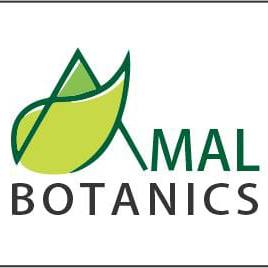
Moringa in Traditional Medicine
Share
Moringa in Traditional Medicine
For centuries, Moringa, often referred to as the “Tree of Life,” has been celebrated in traditional medicine systems across the globe. Its leaves, seeds, pods, roots, and flowers are infused with nutrients and bioactive compounds that make it a cornerstone of traditional healing practices. In this blog, we explore the traditional uses of Moringa in Ayurvedic medicine and delve into how different cultures worldwide have harnessed its healing properties.
Traditional Uses of Moringa in Ayurvedic Medicine
Ayurveda, one of the world’s oldest holistic healing systems, regards Moringa as a powerhouse of medicinal benefits. Here are some of its traditional uses in this ancient practice:
1. Balancing Doshas
- According to Ayurveda, Moringa helps balance the three doshas—Vata, Pitta, and Kapha.
- Its warming properties are particularly effective for managing Kapha and Vata imbalances.
2. Digestive Health
- Moringa leaves and pods are used to improve digestion and alleviate constipation.
- The plant’s anti-inflammatory properties are beneficial for gastrointestinal issues like colitis and gastritis.
3. Boosting Immunity
- Ayurvedic practitioners use Moringa to strengthen the immune system and combat infections.
- Rich in antioxidants, it helps neutralize harmful free radicals.
4. Managing Chronic Conditions
- Moringa is prescribed for controlling blood sugar levels and managing diabetes.
- It is also used for lowering cholesterol and supporting cardiovascular health.
5. Skin and Hair Care
- Moringa oil is applied to treat skin conditions such as eczema and acne.
- Its nutrients nourish hair, promoting growth and reducing dandruff.
How Different Cultures Utilize Moringa for Healing
Beyond Ayurveda, Moringa has been an integral part of traditional medicine across various cultures. Let’s explore how it is utilized globally:
1. African Traditional Medicine
- In African communities, Moringa is used to treat malnutrition due to its high protein and vitamin content.
- Decoctions made from Moringa roots and bark are remedies for fevers and malaria.
- The seeds are utilized for their antibacterial properties to purify water.
2. Traditional Chinese Medicine (TCM)
- Moringa is valued in TCM for detoxifying the body and improving energy flow.
- It is prescribed for managing inflammation and joint pain and improving liver health.
3. Southeast Asian Folk Medicine
- In the Philippines, Moringa leaves are used as a galactagogue to promote milk production in lactating mothers.
- In Indonesia, its extracts are consumed to improve stamina and vitality.
4. Caribbean Remedies
- Moringa tea is a popular remedy for boosting energy and treating colds in the Caribbean.
- Its leaves are used in poultices to heal wounds and reduce swelling.
5. Native American Practices
- Indigenous tribes utilize Moringa to address skin ailments and digestive issues.
- Moringa-infused oils and balms are applied to soothe muscle pain.
The Science Behind Moringa’s Healing Power
Modern research validates many traditional uses of Moringa. Its leaves are rich in vitamins A, C, and E, as well as calcium, potassium, and iron. Additionally, bioactive compounds like quercetin and chlorogenic acid provide anti-inflammatory and antioxidant benefits, supporting the plant’s role in holistic health.
Conclusion
Moringa’s reputation as a healing plant is deeply rooted in traditional medicine practices worldwide. From balancing doshas in Ayurveda to purifying water in Africa, its versatility is unmatched. As modern science continues to uncover its potential, Moringa remains a bridge between ancient wisdom and contemporary health solutions.
Do you have personal experiences with Moringa or insights into its traditional uses? Share your stories in the comments below!
References
- Fuglie, L. J. (2001). Combating malnutrition with Moringa. The Miracle Tree: The Multiple Attributes of Moringa, 117-136.
- Anwar, F., Latif, S., Ashraf, M., & Gilani, A. H. (2007). Moringa oleifera: A food plant with multiple medicinal uses. Phytotherapy Research: An International Journal Devoted to Pharmacological and Toxicological Evaluation of Natural Product Derivatives, 21(1), 17-25.
- Rockwood, J. L., Anderson, B. G., & Casamatta, D. A. (2013). Potential uses of Moringa oleifera and an examination of antibiotic efficacy conferred by Moringa extracts. International Journal of Phytotherapy and Phytopharmacology, 21(7), 801-809.
- Morton, J. F. (1991). The horseradish tree, Moringa pterygosperma (Moringaceae)—A boon to arid lands? Economic Botany, 45(3), 318-333.
- Fahey, J. W. (2005). Moringa oleifera: A review of the medical evidence for its nutritional, therapeutic, and prophylactic properties. Part 1. Trees for Life Journal, 1(5).
